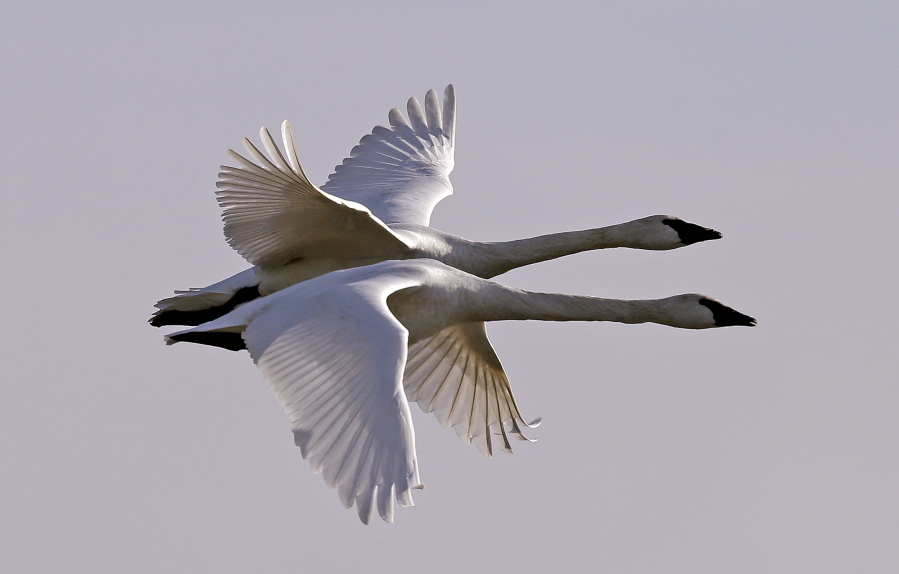PORT ANGELES — This winter, locals can look to Sequim’s skies and waters for booming trumpeter swan populations.
“They’ve definitely been rising in recent years,” said Bob Boekelheide of the Olympic Peninsula Audubon Society.
Trumpeter swans were an uncommon sight in the Sequim area years ago. The first sighting of a swan was by society volunteers during the annual Christmas Bird Count in 1982, Boekelheide said.
Birders had not spotted more than 50 at a time until 2008, Boekelheide said, and there’s been a big increase in the past three years.
Typically, Sequim will see the most swans between January and March before they fly north to Canada and Alaska, Boekelheide said. The largest number of swans counted in the Sequim area was 258 last Feb. 23.
During the most recent swan counts, volunteers spotted 179 on Jan. 9 and 181 on Jan. 12, Boekelheide said.
But why and when they come here is still partly a mystery, he said.
“In November, we never had above 100 swans and this (November) we had well over 100,” Boekelheide said. “Since then, we’ve gone up and down within 20 percent of this time last year.”
Specific swan counts became commonplace for Audubon Society members starting in 2011 after the birds were beginning to die in significant numbers from lead poisoning.
The state Department of Fish and Wildlife provided a grant to the Northwest Swan Conversation Foundation, which in turn worked with the Audubon Society in Sequim for two years. After the grant ran out, Boekelheide said the group continued the count, anyway. They wanted to help prevent issues such as birds flying into power lines.
The Audubon Society has worked with Clallam County Public Utility District to place reflectors in key areas where the swans fly, such as at Lotzgesell and Anderson roads, he said.
Martha Jordan, executive director of the Northwest Swan Conservation Association, has worked with swans for 40 years. In recent years, she said, birds have been spotted traveling in western and eastern parts of Oregon and Washington in “whole new ways we’ve never documented before.”
Jordan said she did work on the Elwha River Restoration in the 1990s and when the dams came out beginning in 2011. She said as many as 80 swans wintered in the Elwha River area prior to the dams’ removal. But with water levels rising, vegetation is now less accessible to swans, so they made a switch to a burgeoning farming community in Sequim.
“You plant it and they will come,” Jordan said.
Farms such as fields by Nash’s Organic Produce attract swans, she said.
“They’re pretty safe there with not a lot of predators,” she said.
Nash’s Organic Produce co-owner Patty McManus Huber said they don’t purposefully discourage or encourage the swans to come to their fields despite seeing big losses in crops.
Staff have considered placing shiny objects in Nash’s hundreds of acres to deter the swans, but McManus Huber said it would be a huge cost in labor and materials.
“We have other issues with the elk on Schmuck Road sometimes, but that’s why we’re a diverse family farm,” she said.
If the birds are gleaning after they’ve harvested a field, Nash’s staff are OK with that, she said, but they are still considering non-damaging ways to deter swans.
Some birders are hoping locals can find a proactive way to enjoy swans without disrupting them after a recent incident in Dungeness.
More than 60 trumpeter swans were harassed in Dungeness on Jan. 6 by a child on a four-wheeler.
“When we disturb them,” Jordan said, “we can affect their breeding or survivability.”



